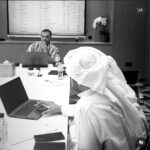Market research is an indispensable instrument for organizations of all sizes. Effective market research enables you to gain valuable insights about your target audience, empowering you to make data-driven decisions that propel business growth and success. This guide will cover everything you need to know about conducting effective market research.
1. Define Your Target Audience
The first step in conducting effective market research is identifying your target market or the group of people who are most likely to purchase your product or service. Consider factors such as age, gender, income, education, interests, and pain points when defining your target audience. Analyzing your current customer base can also aid in identifying common traits.
Once you have identified your target demographic, you can tailor your marketing efforts to suit their particular needs and preferences. For example, if your target audience consists predominantly of fitness-oriented women aged 25 to 35, it would be beneficial to concentrate your marketing efforts on social media platforms that are popular with this demographic, such as Instagram and Pinterest.
2. Choose Your Research Methods
There are numerous research methodologies available, including questionnaires, focus groups, and interviews. Your method selection will hinge on your research objectives and budget.
Surveys are cost-effective instruments for collecting data from a large sample size. You can create and disseminate surveys to your intended audience using online survey platforms such as SurveyMonkey and Google Forms. Include open-ended queries in order to encourage participants to express their thoughts and opinions.
Focus groups foster in-depth conversations and feedback. These discussions are typically led by a moderator and can take place in person or online. Focus groups generate qualitative data that reveals opinions and attitudes. Interviews are another efficient method of investigation. They can be conducted in-person, over the phone, or through video conferencing, allowing you to collect more detailed information from each participant.
3. Conduct Your Research
After identifying your target audience and deciding on a research method, it is time to conduct research. Approach the investigation procedure with an eagerness to learn and an open mind.
Ensure that you distribute surveys to a representative sample of your target audience when conducting polls. Use social media, email, and other digital channels to effectively distribute your survey.
Ask open-ended questions that encourage participants to express their thoughts and opinions in focus groups and interviews. Note their responses and search for patterns and trends.
4. Analyze Your Data
After data collection, the subsequent stage is analysis. Examine patterns and tendencies that can help you identify opportunities and improvement areas.
The use of data visualization tools, such as charts and diagrams, can aid in data comprehension. Determine patterns in responses to specific queries and use these insights to inform your marketing strategy, product development, and customer service efforts.
5. Implement Your Findings
Implementing your findings is the final stage of effective market research. Utilize your research findings to inform your marketing strategy, product development, and customer service efforts. By making decisions based on data, you can stimulate growth and enhance your bottom line.
Consider developing a line of eco-friendly products to meet this demand, for instance, if your research reveals that your target audience is primarily interested in eco-friendly products. Similarly, if your research reveals areas in which your customer service is lacking, invest in additional training for your customer service team.
6. Monitor and Refine Your Strategy
Effective market research is a continuous endeavor. After implementing your findings, it is essential to monitor the outcomes and adjust your strategy as necessary.
Utilize analytics tools to monitor the success of your product development and marketing initiatives. Identify areas for enhancement and be willing to make adjustments in response to your findings.
7. Stay Ahead of the Curve
The market is ever-changing, so remaining ahead of the curve is essential. Maintain awareness of industry developments and trends. Attend conferences and trade shows, and maintain relationships with industry colleagues.
By keeping abreast of the most recent trends and innovations, you can ensure that your company remains relevant and competitive in the market.
Effective market research is a potent instrument for driving business growth and success. You can make data-driven decisions that keep you ahead of the competition by defining your target audience, selecting appropriate research methods, and analyzing your data.
Remember to approach the research procedure with an open mind and a dedication to continuous improvement. You can build a solid foundation for long-term growth and success by doing so.
Effective market research is a crucial component of any successful business strategy. By comprehending your target audience and gathering valuable insights, you can make data-driven decisions that enable you to remain ahead of the competition and propel business growth.
Remember to choose the most appropriate research methods, to conduct your research with an open mind, and to analyze your data exhaustively. Use the results to inform your marketing strategy, product development, and customer service initiatives. Additionally, keeping abreast of industry developments and trends will keep you competitive.
With a commitment to continuous research and improvement, you can lay the groundwork for your business’s long-term growth and success. Unlock the secrets of effective market research immediately and start propelling business growth!





